-40%
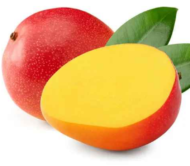
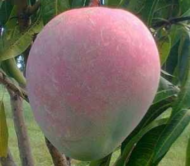
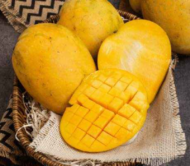
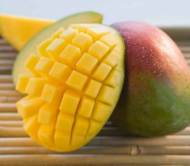
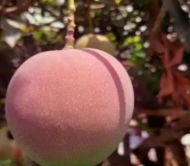





₹650.00 – ₹7,500.00
Details:
The Kent mango is a premium late-season mango variety developed in Florida, USA. Known for its large size, smooth fiberless flesh, and rich, sweet flavor, Kent is a favorite in both fresh markets and exports due to its excellent eating quality and shelf life.
🟡 Origin:
The Kent mango originated in Florida, USA, in the 1940s.
It is a seedling of the Brooks mango and possibly a hybrid with Haden.
It was selected for its excellent eating quality, low fiber, and attractive appearance.
🍭 Taste:
The Kent mango is known for its rich, sweet, and juicy flavor.
Very low in acidity, making it exceptionally smooth and pleasant on the palate.
Almost fiberless, with a buttery, soft texture.
Great for fresh eating, juicing, and desserts.
🎨 Color:
The skin is dark green with a red to dark crimson blush on the sun-exposed side.
Even when ripe, the green base color often remains, which can be misleading to those unfamiliar.
Flesh is vibrant orange-yellow and visually appealing.
⚖️ Weight & Size:
Medium to large fruit, weighing 450 to 750 grams.
Oval shape, with a slightly rounded base and tapered tip.
🍬 Brix (Sweetness):
High sugar content, typically 18 to 20° Brix.
Considered one of the sweetest commercial mangoes from the U.S.
🧵 Texture:
Very smooth, fiberless, and juicy flesh.
Easy to cut, scoop, or blend.
📅 Season:
Mid to late season variety.
In Florida, it’s typically harvested from June to August.
☀️ Climate Requirements:
Grows well in tropical and subtropical climates.
Requires warm, frost-free weather and full sun.
🌳 Tree Characteristics:
Vigorous and upright growth habit.
Can become a large tree if not pruned.
High-yielding under proper management.
🛡️ Disease Resistance:
Fairly good resistance to diseases like anthracnose, but fruit may suffer in overly humid or rainy conditions during flowering.
| Weight | N/A |
|---|---|
| Dimensions | N/A |
| Size |
Large, Medium, Small |
The Kent mango (Mangifera indica ‘Kent’) originated from a seedling of the Brooks mango in Florida in the 1930s. It has become widely cultivated in the Americas, Africa, and parts of Asia due to its excellent fruit quality and productivity.
The fruit is oval to round, large in size (typically 500–900 grams), with green skin that may develop a red or yellow blush as it ripens. The flesh is deep orange-yellow, juicy, and almost fiberless, offering a rich and sweet flavor with low acidity.
Kent mangoes are monoembryonic, so they must be propagated through grafting. The tree has a vigorous growth habit and produces fruit reliably each year. Harvest occurs during the late season—typically July to September in Florida and similar subtropical regions.
| Feature | Details |
|---|---|
| Origin | Florida, USA |
| Shape | Elongated oval |
| Skin Color | Green with deep red to purple blush |
| Flesh Color | Orange to deep yellow |
| Texture | Nearly fiberless, smooth |
| Weight | 500–1000 grams |
| Taste | Mildly sweet, low acid |
| Harvest Season | July to September (late-season) |
| Briks (TSS) | Around 14–18° Brix |
| Keeping Quality | Excellent |
| Seed Type | Monoembryonic |
| Requirement | Ideal Condition |
|---|---|
| Climate | Tropical or subtropical |
| Temperature | 25–35°C, frost-free |
| Rainfall | 1000–1500 mm annually |
| Soil Type | Well-drained loam or sandy-loam |
| Soil pH | 5.5–7.5 |
| Factor | Specification |
|---|---|
| Propagation | Grafted plants (not true-to-type from seeds) |
| Spacing | 8 × 8 m or 10 × 10 m |
| Planting Time | Best in monsoon (June–August) or spring |
| Pit Size | 1m × 1m × 1m with compost + topsoil mixture |
| Stage | Watering Frequency |
|---|---|
| Young Trees | Every 7–10 days during dry spells |
| Mature Trees | 15–20 days interval before flowering/fruiting |
| Avoid | Stagnant water; drip irrigation is ideal |
| Tree Age | FYM | N (g) | P (g) | K (g) |
|---|---|---|---|---|
| 1–3 years | 10–20 kg | 100 | 50 | 100 |
| 4–6 years | 25–30 kg | 250 | 125 | 250 |
| 7+ years | 40–50 kg | 500 | 250 | 500 |
Apply half dose in February–March, half in August–September
Use foliar sprays of micronutrients like Zinc, Boron, and Magnesium
Flowering time: January–March
Use of NAA 20 ppm during flowering can increase fruit set
Protect flowers from powdery mildew with Sulfur sprays
Light pruning after harvest to maintain open canopy
Remove dead, diseased, and crossing branches
Shape tree in early years for strong scaffold
| Feature | Detail |
|---|---|
| Bearing Age | Starts in 4–5 years |
| Harvest Season | July–September (late-season) |
| Fruit Yield | 12–18 tons/ha (mature trees) |
| Harvest Clue | Full shoulders, internal ripening begins |
| Problem | Control Methods |
|---|---|
| Anthracnose | Copper fungicides, avoid overhead watering |
| Powdery Mildew | Wettable sulfur, neem oil |
| Fruit Flies | Bait traps, sanitation, spraying malathion |
| Scales & Mealybugs | Neem oil, systemic insecticides |
High fruit quality and taste
Fiberless pulp and attractive shape
Excellent for fresh market and export
Late harvest complements early-season varieties
Would you like:
A comparison chart between Kent vs Palmer vs Tommy Atkins?
A downloadable cultivation calendar?
Or help identifying Kent mango trees in your orchard?
No account yet?
Create an Account
Reviews
Clear filtersThere are no reviews yet.